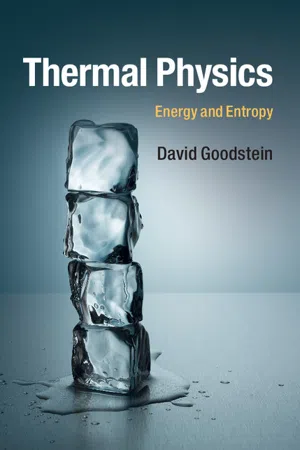About this book
Written by distinguished physics educator David Goodstein, this fresh introduction to thermodynamics, statistical mechanics, and the study of matter is ideal for undergraduate courses. The textbook looks at the behavior of thermodynamic variables and examines partial derivatives - the essential language of thermodynamics. It also explores states of matter and the phase transitions between them, the ideal gas equation, and the behavior of the atmosphere. The origin and meaning of the laws of thermodynamics are then discussed, together with Carnot engines and refrigerators, and the notion of reversibility. Later chapters cover the partition function, the density of states, and energy functions, as well as more advanced topics such as the interactions between particles and equations for the states of gases of varying densities. Favoring intuitive and qualitative descriptions over exhaustive mathematical derivations, the textbook uses numerous problems and worked examples to help readers get to grips with the subject.
Frequently asked questions
- Essential is ideal for learners and professionals who enjoy exploring a wide range of subjects. Access the Essential Library with 800,000+ trusted titles and best-sellers across business, personal growth, and the humanities. Includes unlimited reading time and Standard Read Aloud voice.
- Complete: Perfect for advanced learners and researchers needing full, unrestricted access. Unlock 1.4M+ books across hundreds of subjects, including academic and specialized titles. The Complete Plan also includes advanced features like Premium Read Aloud and Research Assistant.
Please note we cannot support devices running on iOS 13 and Android 7 or earlier. Learn more about using the app.
Information
Table of contents
- Cover
- Half-title
- Title page
- Copyright information
- Table of contents
- Preface
- Acknowledgments
- 1 The basic ideas of thermodynamics and statistical mechanics
- 2 The care and feeding of thermodynamic variables
- 3 Gases and other matters
- 4 The laws of thermodynamics
- 5 The Boltzmann factor and the partition function
- 6 Thermodynamic functions
- 7 Statistical mechanics for fixed and variable N
- 8 More advanced topics
- Solutions to the problems
- Index
